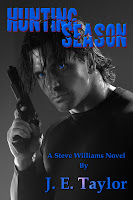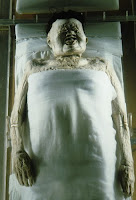
Before even opening her mouth, opera singer, Jenny Lind was already today’s equivalent of a rock star or world-renowned celebrity. If we could all have P. T. Barnum’s marketing savvy pushing our names. She arrived to much fanfare to New York Harbor on September 1st, 1850. Forty thousand people to be exact, and she hadn’t even sung a note. The Swedish Nightingale signed a contract with Barnum and his company to the tune of $187,500 for 150 shows.
Before she was thirty, Lind took the capitols of Europe by storm. I read that Queen Victoria herself threw flowers at her feet. Lind was known for her pure vocal style and humility. Barnum sold her to the American public as a simple, humble woman who dedicated much of her life and earnings to charitable causes. She was a soprano with a range from B to middle C to high G.
Her nationwide tour began in New York City on September 11th, 1850 at the Castle Gardens. The five thousand attendees obtained their tickets through an auction, paying as much as $250 per ticket, which then wasn’t cheap.
During her performance, Lind sang her interpretation of “Casta Diva”, which you can hear:
Maria Calla’s interpretation here.
I wanted to discover what Jenny Lind sang because I wanted to somehow tie it in with what my heroine was feeling at the time. I was lucky in that the music worked perfectly with her emotions.
Here’s a brief excerpt from my novella, His Fifth Avenue Thief. Aaron and Cathlene are attending their first event publically as husband and wife after enduring a separation that tested their inner strength and emotions.
A hush fell over the crowd as the theater darkened. A cacophony of sound rose up from the pit below before falling silent. The curtain parted and Jenny Lind stepped out on stage.
Quiet and restrained, the orchestra began to play. The soprano joined in, her note clear and crisp, floating to all corners of the theater.
Cathlene sat enraptured by her voice. It mesmerized her, transporting her to a place she’d never been. She floated free and happy on this cloud of joy. She was here with Aaron, and there was nothing else which mattered. The performance drowned out the horror of Standish’s crime against her, taking her from the hell she’d been living in and bringing her out into the light.
“I’ve never heard anything sound so beautiful,” Aaron whispered. “Only thing better than hearing her sing of love is hearing you confess yours for me.”
She couldn’t answer. She couldn’t break this fragile spell, this link the music created between them, seeming to dissolve the barriers that separated their lives and hearts.
The beauty of the music, every note that filled the air ringing with emotion, brought tears to her eyes. From what Italian she understood, the Nightingale sang of love found but lost. Every phrase seemed to be torn from her soul, the pain of the heartbroken lover in the story burrowed its way into Cathlene’s own soul.
She was just like this overwrought lover. Both yearning for days long past, time that couldn’t be recaptured. Both wanting their love the way they used to be, but deep down, both knowing it was lost to them forever.
Their sorrow was almost palpable to her, for Cathlene felt her own pain as she thought of being parted from Aaron again. She’d once more fallen in love with the man she’d once known. Trouble was, he wasn’t the same; then again, neither was she. Her lip quivered. He didn’t feel as strongly for her as she did him. Drudging up past memories couldn’t save them.
Elizabeth sent her a concerned glance. She leaned over and whispered something, but Cathlene couldn’t hear for all the emotions that swamped through her. How she wished she had someone to confide in. Sitting amongst these strangers – even Aaron was still a stranger to her in many ways. He fit well into this world, whereas she was completely on her own and alone.
I learned all this, and only included very little of it in my novella, His Fifth Avenue Thief. While writing my first Historical, I learned that although I’d like to include everything along with the kitchen sink where fun facts are concerned, you have to weed out what won’t move the story, or the plot forward. It wasn’t easy picking and choosing what to include, but I had so much fun doing the research.
If you’re an author, while in the process of writing a book, have you ever felt torn what to include? Did you ever wish you would’ve used something other than what you did? If you’re a reader, have you ever stopped reading because the author simply included too much information? Or not enough to keep you hooked?
I’d like to thank P.A. Brown for having me here today. I’ve got to work at the evil day job, but I’ll pop in and say hello as soon as I’m able. I’m giving away a $10 Amazon gift card to one lucky, random commenter. You’ll have until Midnight, Friday EST to leave a comment for a chance to win.
My next stop on my blog tour is for my
Cyber launch party at Author Island
I’m pretty sure I’ll be giving away a prize. [wink]
Bio:
Abbey MacInnis is a published author of Contemporary Western romance. Along with Contemporary, she writes Historical, Paranormal and erotic romance. Whether she’s being swept off her feet by a Medieval knight, regency rake, or cowboy or cop, her heroes are always strong men who’ll love their women unconditionally.
On most days, Abbey can be found at her computer, penning her latest tale. A tale where love, respect, and passion combine to create a satisfying and happy ending. She invites you to step in to the pages of her romances, to leave your worries behind and get swept up in her world.
His Fifth Avenue Thief blurb:
Two years prior, Irishman Aaron O’Connel took his life from rags to riches. Chance and wits have kept him alive in 1850’S New York City. But no amount of money or success can bring his love Cathlene back from the dead. When a thief sneaks her way into his mansion, the last woman he expects to find absconding with his belongings is his long lost wife.
Abandoned on New York’s shores, a widowed, penniless, and ruined Cathlene O'Connel was left to fend for herself in an unfamiliar world. Fear and circumstance drove her to a life of thieving in order to survive, but her heart risks the biggest danger of all when Aaron hands her a scandalous proposition: A son in exchange for her freedom.
Now that he has her back, Aaron doesn't intend to let Cathlene slip between his fingers. He'll do whatever it takes to regain her trust and love. But when an enemy from Cathlene's past resurfaces, Aaron not only faces battling for Cathlene's heart, but also her life.
Buy it at:
Amazon
All Romance Ebooks
Smashwords
Visit me on
my website
Like me
Follow me on
Twitter
See what I’m reading at Good Reads
Come follow my blog.
































